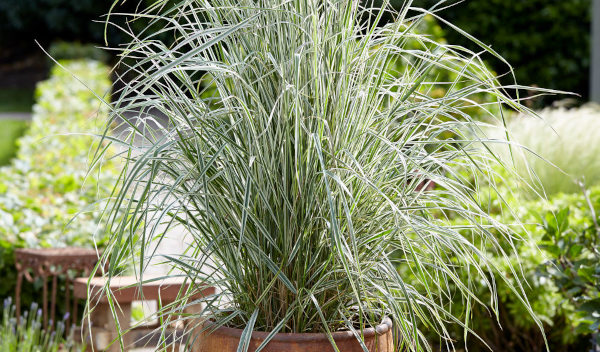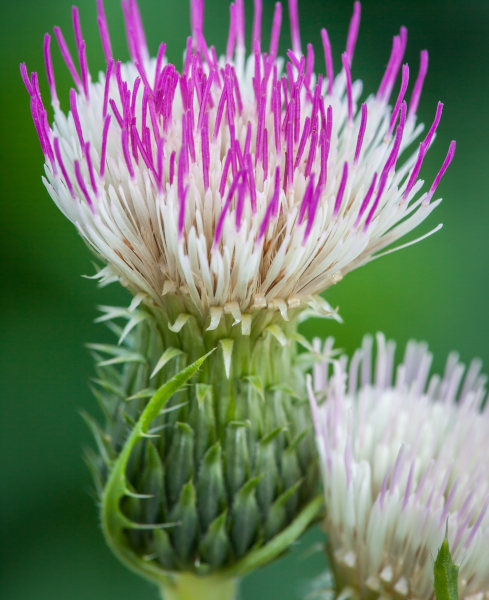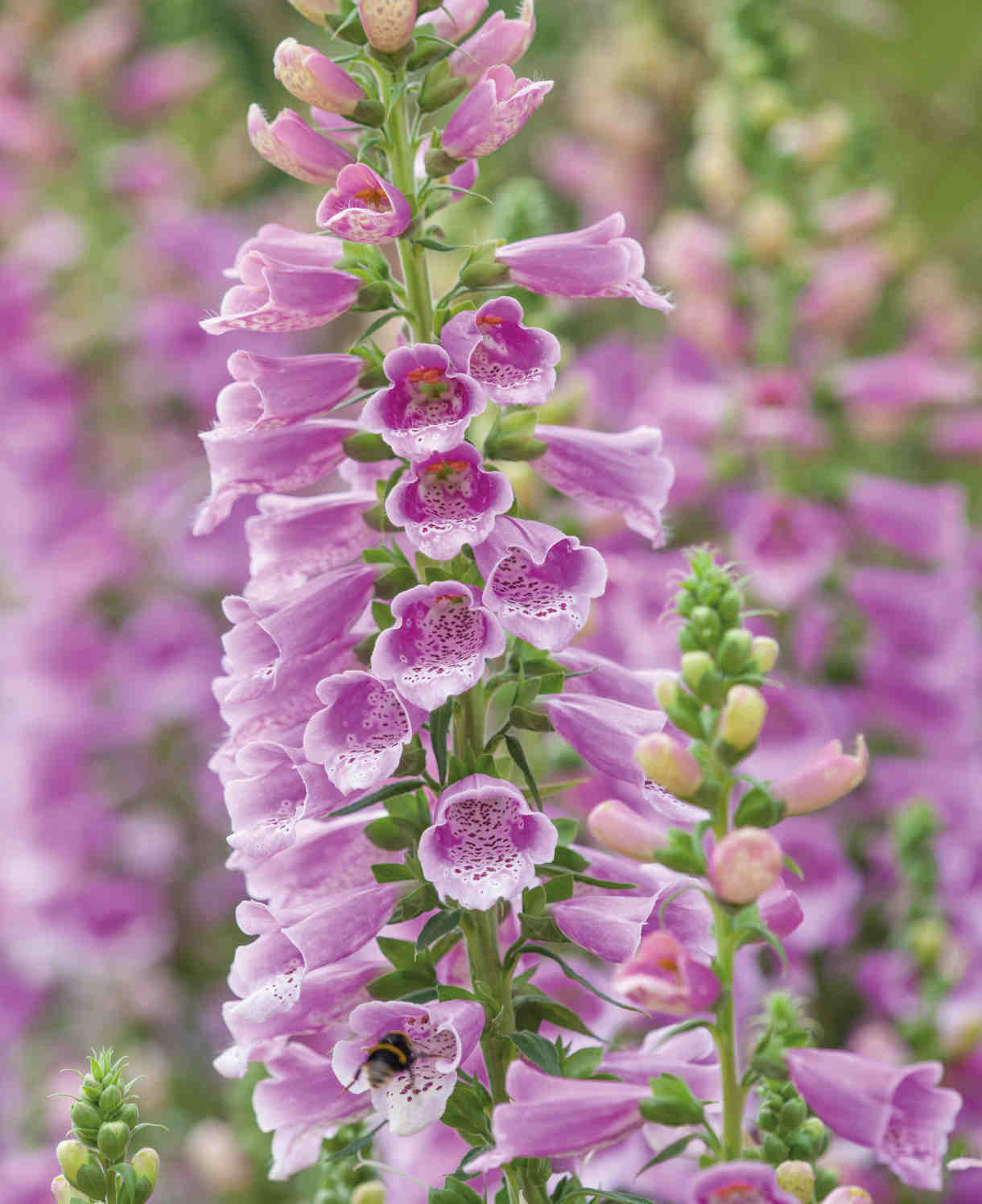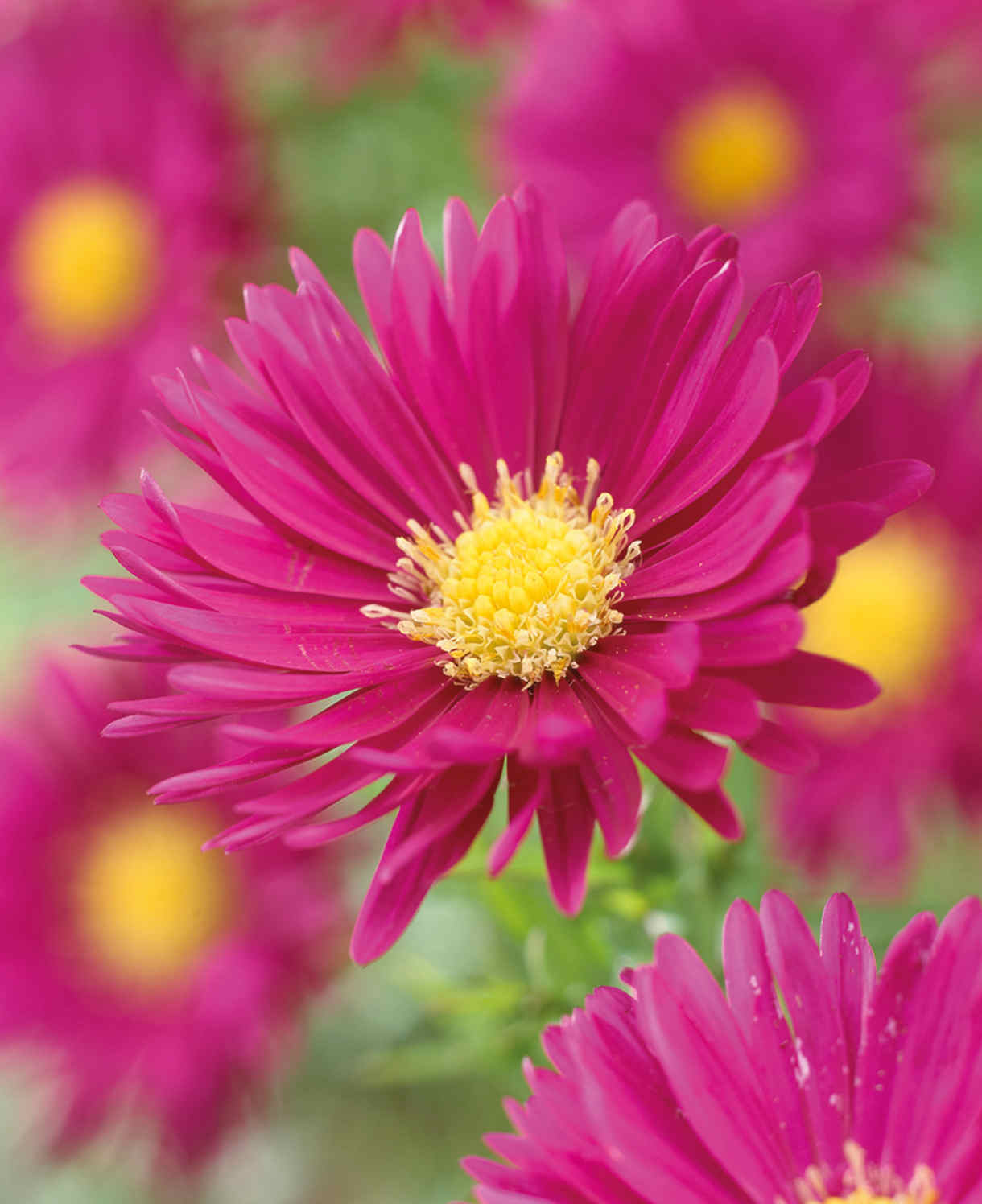How to grow Calamagrostis
This tall, ornamental grass is grown for its adaptable, reliable nature and long-lasting, upright, feathery plumes. There are hundreds of species, though by far the most commonly cultivated is the hybrid Calagrostis x acutiflora. Of this, there are a few different cultivars. The most popular is ‘Karl Foerster’, a particularly dense and upright form which is early into growth and remains standing throughout winter, even in harsh, windy weather. Another well-known staple is ‘Overdam’, slightly looser than ‘Karl Foerster’ and with pale yellow margins on its leaves.

Key Information
Position
Soil Conditions
Hardiness


Where & when to plant Calamagrostis
For best results, plant in autumn or spring. An autumn planting can be done by those gardening in mild conditions (and broadly speaking, this is the southern half of the UK). For those liable to cold winters, it is best to wait until spring (generally the northern half of the UK). Planting can also be carried out in summer, though be prepared to water regularly.
Weave calamagrostis through a border, plant en masse in a dramatic drift, or use as informal screening. It can also be grown in a large pot.
How to plant Calamagrostis
- For planting in the garden, dig the soil area removing any large stones and weeds and breaking up any lumps. Mix in some organic matter such as manure or garden compost. Rake level and firm with your heels. Rake level again.
- Water plants well and allow to drain before planting.
- A good tip is to dig a hole twice the size of the root-ball. Fill with water and allow to drain before placing in the plant.
- Place the plant in the hole, ensuring the top of the root ball sits level with the surface of the soil. Too low and the plant may rot, too high and the roots can dry out.
- Backfill with soil and firm in gently with your foot.
- Soak well with water.
- Mulch around the base with well-rotted organic matter.
- For planting in a container, first choose an appropriately sized pot. The best practice is to start just a few centimetres larger than the rootball and increase in size every year or two. Always ensure there are plenty of drainage holes in the bottom.
- If you are using a large or heavy pot, it can be a good idea to fill and plant it in situ to save yourself the trouble of moving once full.
- Use a good quality potting compost with plenty of horticultural grit mixed in, and, if not already present in the compost (check the description on the bag) some slow-release fertiliser granules.
- Start by partially filling the pot with compost; enough so that when placed on it the upper surface of the root ball is about 3cm lower than the top of the pot.
- Infill all the space surrounding the root ball with compost, firming down with your fingers then adding a little more so the plant is held tight.
- Pick up the container and lightly tap on the potting bench or ground a few times to help further settle the compost around the plant.
- Soak well with water.
- A mulch with horticultural grit will look attractive and help to prevent a ‘cap’ or crust forming on the top of the compost (something container plants can suffer due to the artificial nature of their watering).

What to plant with Calamagrostis
Calamagrostis goes well in a range of planting schemes, though is perhaps at its best in a naturalistic style. To get the look, pair with similarly tall and statuesque perennials such as cirsium, dierama, Verbena bonariensis, thalictrum, eupatorium, and digitalis. Stipa gigantea makes a good fellow grass companion. For lower-level interest, try stachys, aster, astrantia, and persicaria, with Stipa tenuissima ‘Ponytails’ swaying dreamily.



How to care for Calamagrostis
Pruning and Deadheading
Calamagrostis is a perennial, meaning it becomes dormant in winter and sends out new growth each spring. Rather than cutting back in autumn as you may other perennials, however, this one is best left until late winter. This is because its sturdy stems are an excellent source of structure and interest throughout the winter months, as well as being used as a habitat by overwintering insects and other wildlife.
When the time comes (Jan/ Feb is best – any later and you risk damaging the new growth), simply cut the lot down to within about 2cm of the base. Sharp secateurs or a special perennial pruning saw (sickle) work well.
Watering
In the ground, calamagrostis should be given a good soak on planting, then at regular intervals during its first growing season (Mar – Oct) in the ground – particularly during prolonged dry spells. When watering, aim to do a thorough soaking of the ground, and allow the top few centimetres of soil to dry out before you do another. This promotes the development of a deep, healthy root system, rather than watering little and often which encourages only surface roots. After this first year of help, your calamagrostis should be self-sufficient. If you garden on very poor, free-draining soil, you’ll need to continue watering like this for an extra couple of years before it’s safe to leave it to its own devices.
With its limited root run, calamagrostis in a container needs frequent watering throughout every growing season. Again, aim for big soaks with the top few centimetres of compost drying out between each time, though be aware that in the height of summer this can take as little as 24 hours. To check, wiggle your finger down until you hit cool dampness. Come mid to late autumn, the British climate tends to take over watering needs, though do remember to step in during any unseasonably dry spells.
If you’re ever unsure, look out for rolled up leaves which are a good indicator that water is needed.
Feeding
Like most grasses, calamagrostis is not a heavy feeder. On most soils, a mulch of well-rotted organic matter (i.e., a layer of manure or garden compost applied to the soil around the plant) should provide sufficuent nutrients. This has the added benefit of suppressing weeds and locking in moisture. Mulch when planting, and then again each spring.
If you garden on very poor soil applying a general-purpose granular feed to the surface of the soil and lightly working in (known as a ‘top dress’) can reap benefits. Do this when mulching in spring – first apply the top dress, then cover with the mulch.
Container-grown calamagrostis is different, relying solely on the gardener for nutrition. Get off to a flying start by making sure you use a good quality potting compost with some slow-release fertiliser granules mixed in. After this, carry out a replenishing ‘topdress’ annually in spring, simply scraping away the top few centimetres of compost and replacing with a fresh load (also with slow-release fertiliser granules mixed in). Remember also to repot your calamagrostis every few years, going up slightly in size each time until it reaches full size.
Cold Protection
Calamagrostis is hardy and able to withstand a UK winter without the need for additional protection.
Pests and Diseases
Calamagrostis is considered problem-free.
How to propagate Calamagrostis
The quickest and easiest way to propagate calamagrostis is to lift and divide established clumps in spring. As well as providing new plants this is recommended as a routine maintenance practice, done every few years to maintain the vigour of existing clumps. You’ll know it’s time to do this when the centre of the clump begins to die out, creating a ‘donut’ effect.
- Choose a day when the soil is not frozen or waterlogged.
- Dig the plant out of the ground.
- Shake off any excess soil.
- Separate the plant into sections using either swift, cutting blows with a sharp spade, or two forks inserted back-to-back with tines touching, handles then pushed together to prise the plant apart.
- Discard old, damaged, or surplus pieces, keeping healthy, vigorous material.
- Replant decent-sized pieces where desired, and any smaller bits can be potted up.
- Water well until fully established.
Common Calamagrostis questions
- Is calamagrostis a perennial?
Yes, although its ability to remain intact throughout winter and then speed at which it returns to growth in spring means it has a near year-round presence in the garden. - Is Calamagrostis x acutiflora ‘Stricta’ different to x acutiflora ‘Karl Foerster’? They look the same.
Contrary to what some nurseries and sellers may say, these are the same plant. ‘Stricta’ is simply a synonym for ‘Karl Foerster’. - Who was ‘Karl Foerster’?
He was a prominent German nurseryman, credited with kickstarting the ‘New Perennial’ style of planting in the mid-20th This grass was one of his many introductions to the world of horticulture.




